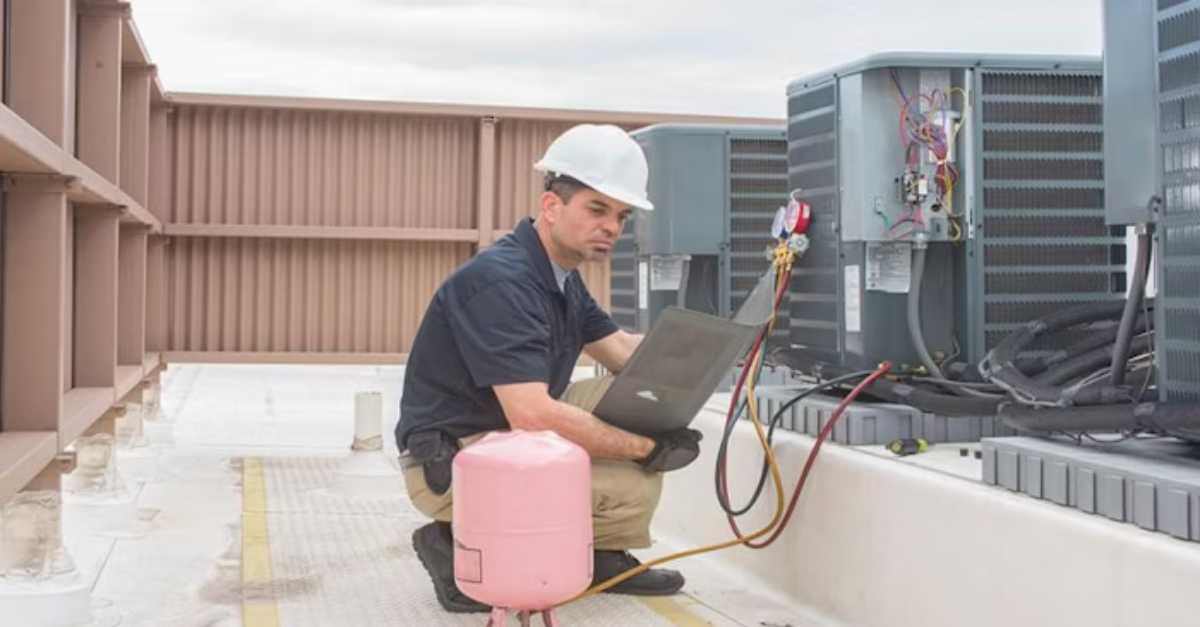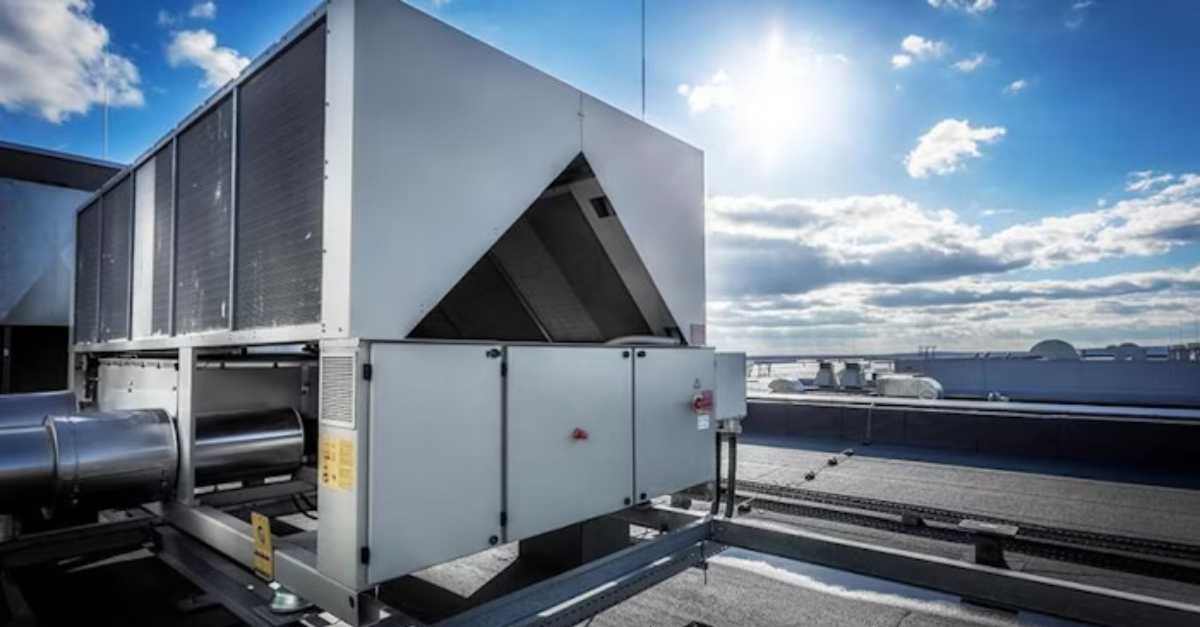
EPA 608 Changes Can Affect Your Enterprise Refrigerant Management Compliance
With fines totaling upwards of $37,500 per day, it’s important to note how new regulatory changes will affect your enterprise refrigerant management ...
Solutions
Workplace Management Solutions
Real Estate Management Solutions
Maintenance Management Solutions
Energy Management Solutions
Engineering Document Management Solutions
Asset Management Solutions
Automate campus scheduling for classes, meetings, and exams with our EMS software.
Plan and manage conferences effortlessly with EMS software to impress guests and streamline operations.
Boost workplace flexibility and maximize space use with seamless desk and room booking.
Organize workplace or campus events smoothly, creating memorable experiences.
Optimize workspace, manage allocations efficiently, and reduce costs with our space management solutions.
Deliver projects on time and within budget by improving communication, collaboration, and efficiency with our software.
Streamline lease accounting for ASC 842, IFRS, and GASB compliance.
Manage leases efficiently by tracking key dates, analyzing costs, and ensuring compliance.
Centralize data and analytics for better insights, faster negotiations, and revenue growth.
Centralize facility and asset maintenance, automate work orders, and ensure compliance with our CMMS software.
Extend asset life, reduce downtime, and prevent costly repairs with data-driven monitoring.
Prevent equipment failures and extend asset life by detecting and addressing issues early.
Make sustainable, cost-efficient energy decisions by monitoring and optimizing power consumption.
Remotely monitor and control equipment with real-time data to predict issues, boost efficiency, and reduce downtime.
Easily share and collaborate on documents, creating a single source of truth for engineers and contractors.
Manage and analyze assets across their lifecycle to schedule maintenance, reduce downtime, and extend lifespan.
Improve visibility, automate work orders, and ensure compliance for efficient facility and asset management.
Resources
Browse our full library of resources all in one place, including webinars, whitepapers, podcast episodes, and more.
Support
Looking for access to technical support, best practices, helpful videos, or training tools? You’ve come to the right place.
About Accruent
Get the latest information on Accruent, our solutions, events, and the company at large.

To limit greenhouse gases and ensure environmental safety and compliance, understand the EPA standards for refrigerant gases.
In 2016, the EPA proposed an amendment to its existing National Recycling and Emission Reduction Program, more commonly known as Section 608, including tightening the allowable leak rate thresholds, requiring more accountability on the part of contractors and technicians, increasing the frequency of system inspection, and expanding the number of refrigerants that are regulated.
In the United States, the Environmental Protection Agency (EPA) has set strict standards for regulating and monitoring a refrigerant leak. The Montreal Protocol and Kyoto Protocols were both created to establish similar environmental standards internationally. These regulations include protocols for repairing refrigerant leaks or disposing of systems within a certain timeframe.
Refrigerant gases are those used in climate control in commercial and business facilities such as warehouses, stores and office buildings. The refrigerants used in commercial heating, ventilating and air conditioning (HVAC) or regular air conditioning (AC) units include hydrofluorocarbons (HCFCs), chlorofluorocarbon (CFCs) and perfluorocarbon (PFCs).
Hydrofluorocarbons (HCFCs), perfluorocarbons (PFCs), and chlorofluorocarbons (CFCs) are destructive Greenhouse Gases (GHGs) as well as harmful to the upper ozone layer. HCFCs do not have any of the organic chemicals chlorine or bromine, but they still do have a possibility of causing ozone depletion.
These refrigerant gases are not only considered Ozone Depleting Substances (ODS) but many of them also have very high Global Warming Potential ratios which results in their detailed tracking, monitoring, and reporting related to their Global Warming effects.
While perfluorocarbons do not contribute to the depletion of the ozone layer, scientists worry that PFCs can contribute to global warming since they have a very high global warming potential (GWP). GWP is a ratio developed to determine which chemical substances and refrigerant gases released into the atmosphere create more warming. The most common greenhouse gas (GHG) talked about the most often is carbon dioxide (CO2) or just carbon for short.
CFCs have been used since the early 1930s and were found to deplete ozone in the 1970s. A chemical reaction caused by ultraviolet (UV) radiation breaks off the chlorine atom in CFCs. This chlorine atom binds with oxygen already in the atmosphere. The depletion of the ozone is the result of chemical reactions where chlorine and oxygen are split apart.
Refrigerant management and knowing, down to the pound level where all refrigerant gases reside, is critical for the safety of the environment and to limit the release of Greenhouse Gases (GHG). The result of refrigerant emissions is either ozone destruction or increased Global Warming, both contributing to climate change.
EPA inspectors, governmental regulators, as well as many state officials are responsible for monitoring commercial AC and HVAC systems. They can conduct spot checks of the refrigerant service records, purchase orders, transit logs of gas transport for destruction, as well as many other pieces of data related to refrigerant gas management.
The refrigerant gas management laws were revised in 2009. The new regulations have specifications for system owners and service technicians to more accurately track leaks and to ensure recycle, recovered, or virgin refrigerants are documented correctly.
Due to the connection between refrigerant gases and their effect on climate change, many legislative bodies including various US states and the EPA have stepped up and increased the detailed refrigerant reporting requirements.
The U.S. Clean Air Act (Section 608) has technical specifications and certification requirements for AC or HVAC service technicians. In most cases, technicians must be EPA certified before working on systems containing refrigerant gas.
The EPA has detailed regulations on the purchase of refrigerant gas. For the most part, service technicians must be certified to even purchase gas in cylinders as small as 20 pounds. Nobody can buy any amount of refrigerant unless they are certified.
The U.S. Environmental Protection Agency (EPA) has four certification classes. Type 1 is for small appliances. Type 2 is for high and very high pressure. Type 3 is a low pressure certification. Type 4 EPA certification is universal, meaning technicians can work on a variety of AC/HVAC systems of different pressures and gas types. Any technician with a particular certification type can only fix or recover equipment that is specified for the certification type.
Becoming effective in 2010, new legislation starting in California will have strict requirements on the monitoring and tracking of refrigerant gases. In some cases, AC/HVAC systems containing 50 pounds of refrigerant will be required to keep service records, history of all gas purchases and sales, and to submit refrigerant usage reports to regulators annually.
AC/HVAC systems above 2,000 pounds will be required to have automatic leak detection systems and monitoring. This will result in more specific reporting and system registrations.
For service technicians and those who own or operate AC and HVAC systems containing refrigerant gas, it is required by law to monitor, manage and report refrigerant usage for every system in operation.
With fines totaling upwards of $37,500 per day, it’s important to note how new regulatory changes will affect your enterprise refrigerant management ...
Avoid fines from refrigeration leaks, monitor usage, and stay compliant. vx Sustain has all your refrigeration management needs covered.
Discover how the EPA's new refrigeration regulations impact businesses and how Accruent Observe simplifies compliance with asset management and ...
Subscribe to stay up to date with our latest news, resources and best practices.
* To unsubscribe at any time, please use the “Unsubscribe” link included in the footer of our emails.